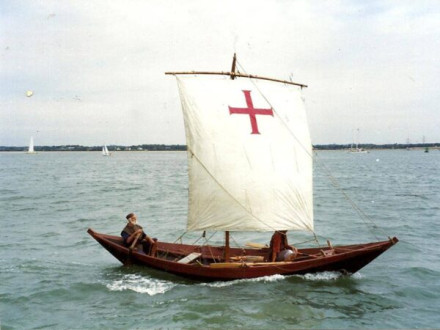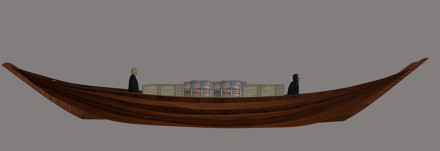History
This Anglo-Saxon boat was discovered in 1970 near the village of Graveney, in Kent. The boat lay in a silted watercourse in what is now an old marsh.
The boat has been dated using the C 14 method (giving it a date of AD 944 AD with a margin of 30 years to either side), and by dendrochronology. The latter dating method, performed in 1978, provided a date of AD 927 AD with a margin of two years either side, and this was revised in 1983 to 895 AD with a two year margin.

The appearance of the boat has been reconstructed at about 13.60 m long, 4 m wide and 1 m high amidships. A hydrostatic study shows that it was seaworthy and was capable of sailing with a cargo of 6-7 tonnes. The low freeboard, however, made the boat less capable of handling rough seas.
The boat was probably in use in trade across the English Chanel. Fragments of Mayener lava querns from the Rhineland and traces of hops that were found in the wreck may be remnants of cargo.
Description
The boat was constructed of oak and was clinker built, its remains being 8.9 m long, 3.4 m wide and up to 1.5 m high.
The flat keel had eight strakes fastened to ten frames. Iron rivets, some fastened with wooden pegs, held the overlapping strakes, with a caulking of wool treated with vegetable tar. The frames were attached to the strakes by treenails of willow.

Presumably, the boat was originally pointed at both ends, though only part of the stern had survived.
Status
The boat was carefully removed by the National Maritime Museum to be conserved and stabilized by the Mary Rose Trust.
References
- Fenwick, F. (1978).
The Graveney Boat.
British Archaeological Reports, British Series 53. - Selin Ali (for master’s thesis completed at the University of Southern Denmark.).
Graveney Boat Model. - Oddy, W. A. and van Geersdale, P.C. (1972).
The recovery of the Graveney Boat.
Studies in Conservation, vol. 17 no. 1.
pp 30-38. - Ottor and the Graveney Boat.